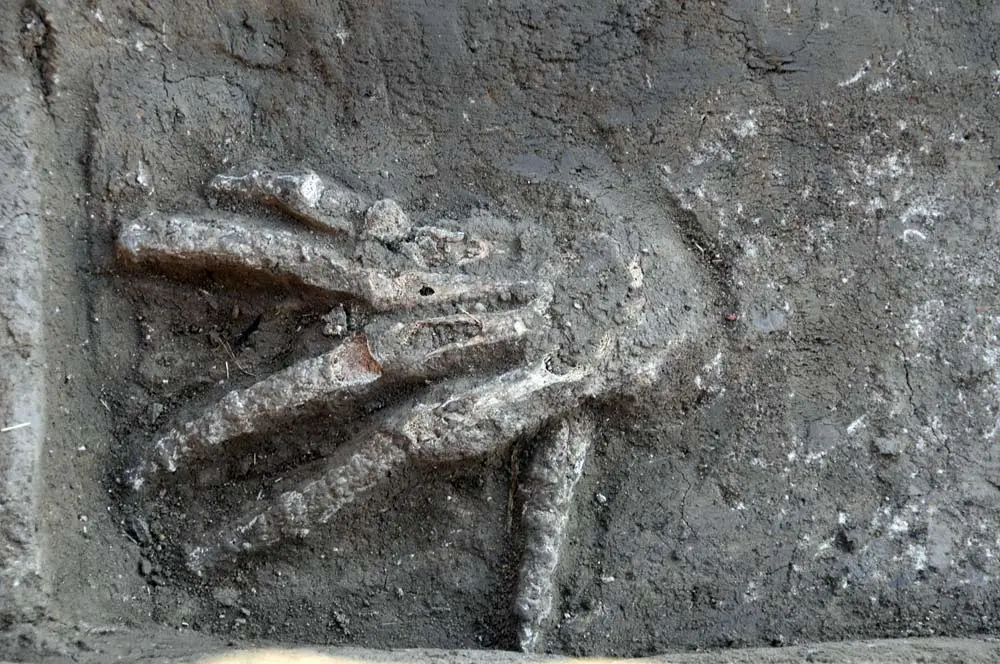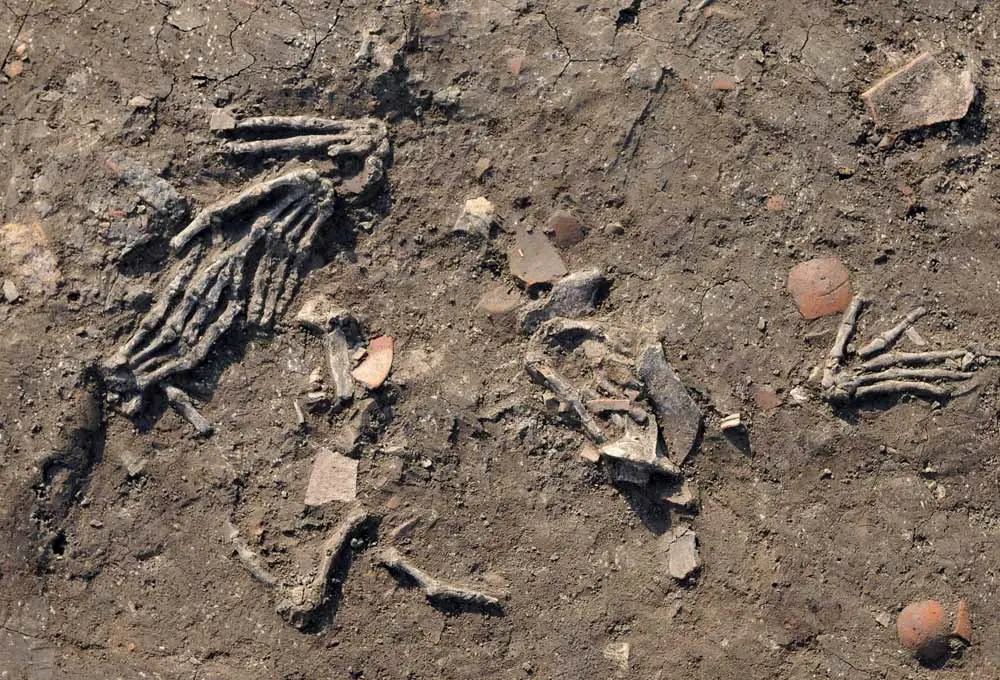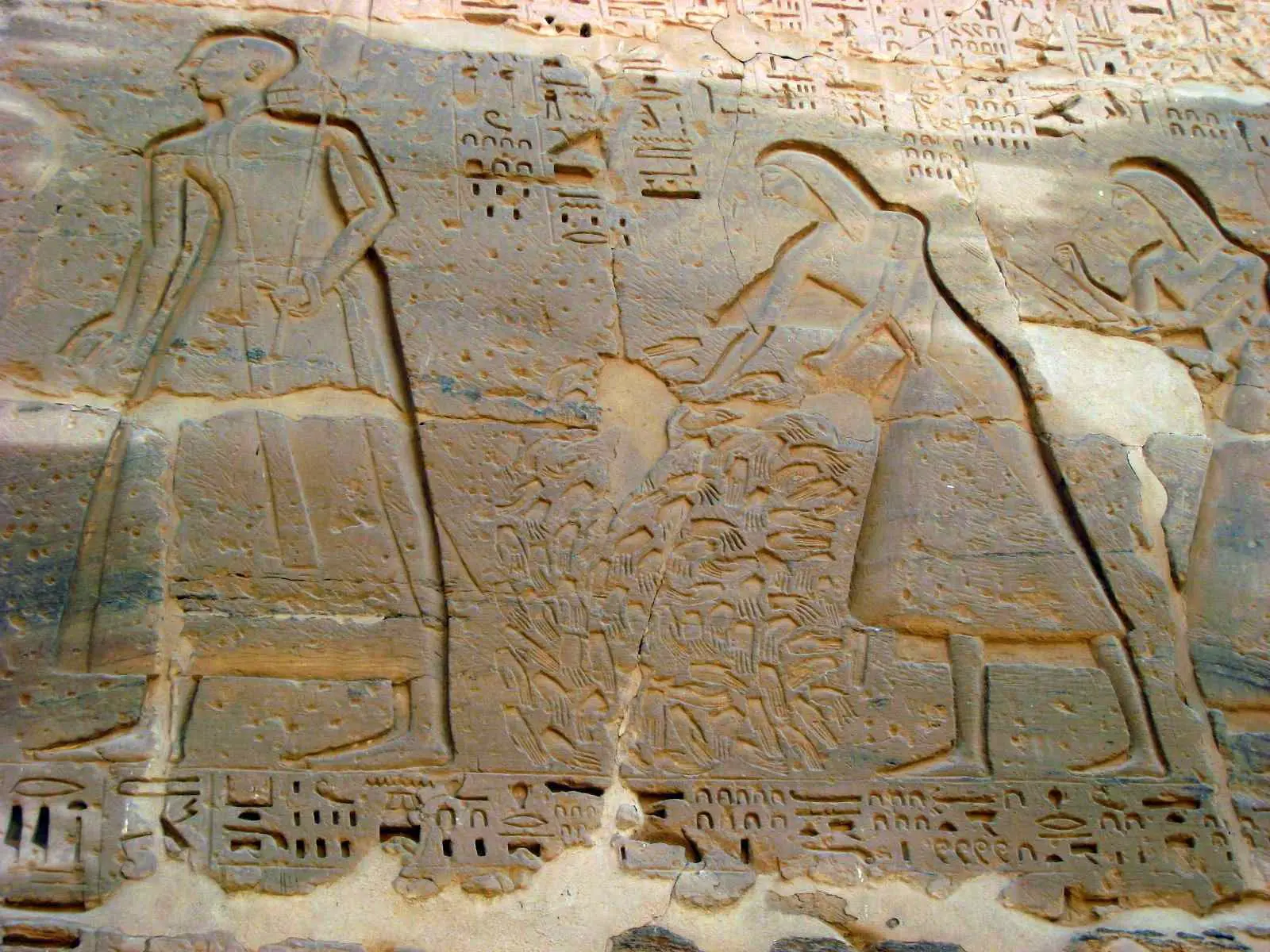The fall of 2011 marked a significant archaeological breakthrough in ancient history. A team of archaeologists working in the palace of ancient Avaris made a startling discovery: the remains of 16 human hands buried in four separate graves within the palace compound. This fascinating find has opened a new chapter in our understanding of ancient Egyptian rituals and the Hyksos period.
Discovery and Initial Analysis

The discovery site, located at what is believed to be the Hyksos complex, included four pits with human hands. Two pits, located directly in front of the throne room, each contained a single hand. The remaining 14 hands were found in two pits outside the palace. Upon examining the remains, the archaeologists concluded that the bones date back approximately 3,600 years, suggesting a common timeline and potentially a single ceremony.
Ritualistic Implications

Manfred Bietak, the Austrian archaeologist leading the excavation, revealed to the Egyptian Archeology newspaper that these hands support ancient Egyptian narratives and artistic depictions where soldiers severed their enemies’ right hands in exchange for gold. This practice, beyond its tangible rewards, symbolized the removal of an enemy’s power, possibly extending into the supernatural realm when performed within a sacred space.
Bietak elaborated, “You deprive him of his power forever. Our finding is the first and only physical evidence. Each moat represents a different ceremony.” This discovery serves as a unique physical testament to ancient Egyptian warfare rituals and their associated ceremonies.
The Context of the Hands

While the precise identity of the individuals to whom the hands belonged remains unclear, their abnormal size hints at selective significance. Whether these hands were from Egyptians or the Hyksos, an Asiatic people who once controlled parts of Egypt, has yet to be determined. The placement of the hands, particularly those in front of the throne room, suggests a deep ritualistic meaning, potentially linked to a display of power or a plea to the gods during tumultuous times.
Historical and Cultural Connections
This practice of hand severance and its ritualistic burials can be seen as part of a broader cultural and religious context in ancient Egypt, especially in areas subjected to foreign invasions. Egyptians often invoked their deities to curse invaders with plagues or famine. These hand sacrifices could have been intended as potent curses against the occupying forces, reinforcing the belief in divine retribution.

Additionally, the separation of the two individual hands might indicate special offerings to appease the gods, potentially aligning with theories about the Hyperborean civilization. This ancient culture, described in various ancient texts, allegedly consisted of exceptionally large people. The oversized hands found in Avaris could suggest connections to these mythical narratives, adding another layer of intrigue to the discovery.
The discovery of the 16 severed hands in ancient Avaris provides a rare glimpse into the ceremonial practices of ancient Egypt, particularly during the Hyksos period. While much remains to be explored, this finding challenges our conventional understanding of ancient rituals and opens up possibilities for new historical interpretations. The presence of these hands, their abnormal size, and their ceremonial burial allude to a complex interplay of power, religion, and warfare that defined the era. As investigations continue, we may uncover more about the people behind these hands and the true extent of their significance in ancient Egyptian society.





